Converting your green from Poa annua to bent/fescue is critical to achieving a Performance Bowling Green.
The surface conditions associated with annual meadow grass (Poa annua) are the polar opposite to those associated with the fine fescue and bent grasses.
Greens which are dominated by the poverty grasses (fescue and bent) are typically firm, smooth, true and fast, whilst greens where Poa annua makes up the majority of the sward are typically soft, wet, spongy, unpredictable to play on and slow.
How can this be? The vast majority of the bowling greens in the UK are more than 50 years old and in that time most of them have had at least 150 tonnes of sand applied to them, in many cases a lot more. We know that the desirable fine grasses thrive in the free draining, sandy soils of the seaside links and that Poa annua is, well, a meadow grass, presumably at home in a more loamy environment?
The fact is that Poa annua is a pioneer opportunist and will take over any bare space on the green surface quickly and effectively. It is an annual plant, meaning that it goes through its entire life cycle from a seed to a plant that produces seed in one season. And of course we know about Poa annua seed-heads don’t we? It actually produces seed heads all year round almost, so there is no let up in its disruption of the green surface.
How it works in Nature
Nature works in a very efficient way and the process of colonisation of new, bare ground by plants is no exception to this. The progression of plant species has evolved so that any bare ground is first dominated by annual seeding grasses like poa annua and tap rooted weeds like dandelions. In a completely natural environment the next stage will see perennial grasses such as festuca (fescue) and agrostis (bent) take over from the annuals, before eventually giving way to shrubs and eventually forests.
In climates where there are plentiful grazers like sheep, deer and cattle, grasslands will develop and the progression will largely stop with perennial grasses becoming the dominant plants for the long term. On bowling greens, the grazers are replaced artificially by the greens mower and greenkeeper, except that in many cases we have regressed back to a sward dominated by the annual weed grass Poa annua. Why should this be?
It’s because, through a mixture of inappropriate maintenance, unnecessary maintenance and poor judgement, we have in many cases unwittingly caused the soil beneath our greens to become barren and inert, making the surface week and susceptible to ingress of annuals like Poa annua.
Turning the Tide
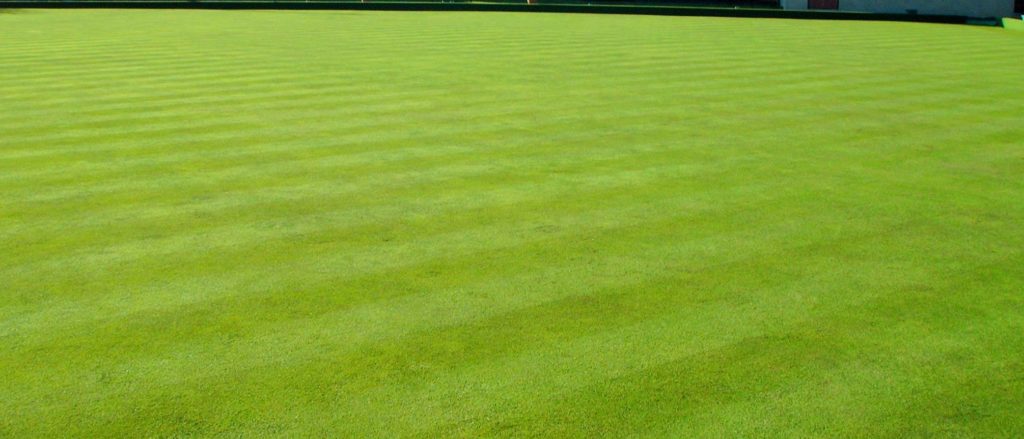
Fortunately, it is possible to turn this situation around predictably and without too much drama. And although you’ve probably heard lots of scary stories about how you will need to first put the Poa annua under enormous stress before overseeding with fescue/bent seed, this isn’t necessary either.
It might sound too good to be true, but you can quite easily turn your green back into a fine, firm surface dominated by the fine perennial grasses, without doing anything questionable with pesticides that would surely lose you your job as greenkeeper. It is possible to convert playing surfaces from predominantly Poa annua to predominantly fine grasses without stressing the grass and the solution lies in the life in the soil itself.
What causes perennial grass domination as opposed to annual grass domination of the rootzone?
As we saw in a recent article, the supply of the main fertiliser elements (commonly called plant nutrition) is driven by soil biology. The micro-life in the soil makes nutrients, the building blocks of plant tissue, available in plant useable form. As the nutrient requirements for plant species above ground changes so does the microbial life underground.
You will remember too that the plants are producing glucose for energy during photosynthesis and all of that energy is used by the plant to grow and live. Our fine perennial grasses release about half of this energy above ground in the stem and leaves and this feeds the above ground food chain like grazers (green mowers!). Below ground they release the remaining 50% of the energy they produce by leaking proteins and carbohydrates as root exudates, building roots and producing thatch. This energy feeds the soil food chain of bacteria, fungi, protozoa, nematodes, arthropods and worms, or the soil food web as we’ve come to know it.
The Free Fertiliser Factory
Beneath our feet, there is the most remarkable factory where fertiliser for our turf is essentially produced for free, but only if the soil is working properly. In simple terms bacteria eat the proteins, sugars and carbohydrates that leak from the roots of the plants. Some Fungi mop up any juice exuded by the roots that they can, but most live on the more woody cellulose and lignin found in thatch. You’ll remember I described it as a jungle down there and in true jungle style, these bacteria and fungi become food themselves for predatory microbes including nematodes and protozoa. These predators excrete ammonium, which is then converted to nitrate by bacteria in the presence of oxygen. Nitrate can be used directly by the plants and so this amazing cycle of growth and decay continues, producing everything needed by the plants in terms of soil nutrients.
Mycorrhiza
In another article, I focussed on a very important group of fungi that live in and around the roots of our fine grasses. These fungi are called mycorrhizae, from the Latin via Greek for fungus (myco) and root (rhiza). Mycorrhizal fungi associate with the root systems of our perennial grasses and together they form a symbiotic relationship where the Mycorrhizal fungi extend their hyphae into the soil, produce enzymes that make phosphate and other nutrients available to the plant and then transfer these nutrients, trace elements and water back to the plant in a form it can readily use to supply the raw ingredients for growth. We can think of these fungi as something akin to a root extension as they extend the effective root area of the plant many times over, allowing it to access resources from a far greater volume of soil than it otherwise would be able to.
As we saw in the same article, this association of fungus and root is essential to the success of the fine perennial grasses. This relationship makes perennial grasses twice as efficient as annuals, which rely on fertiliser inputs to grow. It’s not uncommon for construction specifications for new greens and sports pitches to specify that the new rootzone must be inoculated with mycorrhizal fungi from the outset. In this way the grow in can be steered towards favouring fine perennial grasses from the outset. Of course, this seemingly miraculous symbiotic activity goes on in natural grassland systems and closer to home, in areas such as meadows and even golf course roughs without fertiliser inputs and without thatch building up!
The Microbe Hall of Fame:
The need for seed
Conversely, and as we can readily observe on our greens, Poa annua puts its energy into producing seed and we can see this almost all year round on greens that are infested with Poa. These annual plants have one major aim and as a result expend around 75% of the energy created in photosynthesis on seed production as that is their primary means of reproduction. This of course means that there is only about 25% of this energy left to go into feeding its underground support system. Poa annua does not associate positively with mycorrhiza, so the soil food web that grows underneath seed producing annual plants is very different from the soil food web that lives under perennial grasses.
Changing the soil food web to suit the finer grasses
For greenkeepers who want to produce high performance, fescue/bent dominated greens the task is clear. We need to manage the soil food web to encourage the fine perennial grasses. Yes, believe it or not you can easily influence the type of grass you grow, and convert turf dominated by annual grasses into turf that consists of predominantly perennial fine grasses. There is no need to kill off or unduly stress the existing grass during the transition period, no need for the transition period to be painful in any way for players, club officials or most importantly, the greenkeeper!
Soil on its own is a fairly sterile medium, so when the ground is bare there is no thatch to feed fungi (so they aren’t there) and bacterial levels are usually low, which means the pioneer annual plants that first colonise bare soil have growth characteristics that help them to get by with only the help of the limited soil bacteria. In these conditions, there is no active soil food web, it’s fairly inert; ring any bells? Yes, the thatchy, anaerobic, excessively sandy and therefore inert rootzones we unwittingly create over years of mis-guided maintenance are dominated by Poa annua for a reason, there is no soil food web to speak of. We’ve already seen that Poa annua puts most of its energy into producing seed and relatively little goes underground to feed the supportive food chain, which explains why Annual Meadow Grass needs more fertiliser and water than the finer grasses.
In natural conditions, as an annual, Poa aims to produce seed and then die and when this happens thatch is formed. This means there is now food for fungi and a more complex soil food web can form that supports perennial grasses. However, due to our bowling green situation being somewhat artificial, the way that we manage turf often means that this cycle gets stuck at the Poa annua stage. This is the Circle of Decline in action.
Weighing microbes
Now, depending on how keen you are and how much time you have on your hands, it’s possible to identify, measure and even weigh the microbes found around the root system of Poa annua. To save you the time and trouble I can tell you that if you do that you will discover that there is about ten times more bacteria than fungi and very little in the way of mycorrhizal fungi in the root systems.
Conversely, if you do the same exercise with fescue or bent grass in healthy soil, you will find approximately equal amounts of bacteria and fungi and considerable mycorrhizal colonisation of the root system.
Annual meadow grass doesn’t associate so readily with mycorrhizal fungi meaning that in addition to its already less developed root system, it also lacks the extended nutrient harvesting ability that mycorrhizae bring to the fine grasses.
Why is everything upside down in greenkeeping land?
Here’s a conundrum for you. The natural way of things, given free draining soils with enough water and organic matter, will invariably result in a progression from bare soil to poa annua and then on to fine perennial grasses like fescue and bent. Meantime back in greenkeeping land it seems to work the other way! We start out, usually after considerable expense and effort with fine perennial grasses and stand back getting grey, nervous, bald or all of the above while we watch our beautiful turf progressing to poa annua! Why is that?
The answer is not very palatable I’m afraid. It’s because we think we’re smarter than nature…there I’ve said it!
Unfortunately, we’ve gotten into the habit of thinking we can control everything. As a result of this we, albeit unwittingly, quickly turn our rootzones into sterile, inert soil that is very much like the bare soils that are initially colonised by weeds and poa annua. We’ve developed lots of clever management techniques and materials to accelerate this process.
Salt, Osmotic shock and the reason greens become inert?
Soil microbes eat carbohydrates and proteins which are organic compounds, but we typically supply soil nutrients via inorganic fertilisers which are based on mineral salts. Sulphates of Ammonia and Iron are common components of these inorganic fertilisers. These minerals have mineral salt content of 70 and 72% respectively. The salt index is a measure of how much mineral salt is in the product, so for for every 100kg of fertiliser we apply, about 70kg is mineral salts. An excess of salt is not good for any living cellular organism and the plants and soil microbes can suffer from osmotic shock.
This is Osmosis in reverse. You will remember from my earlier article explaining how plants take up water and nutrients (the soil solution), that Osmosis is the flow of soil solution from a weak state (in the soil) to a concentrated state (inside the plant) across the semi-permeable membrane of the root hair cells. Conversely and catastrophically when the soil has a high concentration of dissolved salts, it becomes the strong (concentrated) side of the equation and the process is reversed, effectively drawing water out of the cells of the plants and of course the microbes…ouch, not good! This is osmotic shock in action.
Water, water!
The plants and soil urgently need more water, which is no problem, we have a cool irrigation system. However, if you recall our ideal soil physics from yet another earlier article, the continual addition of more water starts to take up much needed aeration pore space in the soil. This reduces the space available for oxygen and unsurprisingly anaerobic conditions start to develop and some of the earliest casualties are the fungi. Some of the bacteria can metabolise anaerobically (in the absence of oxygen), but this has the effect of reducing ammonium and sulphate to toxic ammonia and sulphide…double ouch!
And now comes the thatch build up (and an amazing fescue fact)
In a natural grassland system, the soil fungi will eat all of the thatch the lovely perennial grasses can produce. Now that the fungi are dead, that thatch starts to build up, and it can build up remarkably fast. This excessive build up of thatch holds more water at the surface, and the once thriving, self managing eco-system goes into a tail spin I’ve called the Circle of Decline. The natural breakdown of thatch is a key process in the life cycle of a healthy grassland eco-system. As it degrades (all done by microbes) it produces humus, essential for moisture and nutrient retention, humic and fulvic acids, essential plant foods and maintainers of the ideal, slightly acidic pH (5.5-6.5) which is what fungi need to survive.
Now here’s a Fescue conundrum for you…
 Fescue, that wiry, poverty grass so beloved of greenkeepers, bowlers, sheep and golfers is just as at home on the wildest and coldest of Scottish North Sea as it is on the gentle chalk down-lands of Southern England. It’s the de-facto natural, perennial grass that will colonise these areas with no help from us. We know from primary school science that both the seaside sand and the chalk soils of the downs are made of calcium rich seashells and that as a result they must be alkaline. BUT, fescue likes slightly acidic soil, so how does that work?
Fescue, that wiry, poverty grass so beloved of greenkeepers, bowlers, sheep and golfers is just as at home on the wildest and coldest of Scottish North Sea as it is on the gentle chalk down-lands of Southern England. It’s the de-facto natural, perennial grass that will colonise these areas with no help from us. We know from primary school science that both the seaside sand and the chalk soils of the downs are made of calcium rich seashells and that as a result they must be alkaline. BUT, fescue likes slightly acidic soil, so how does that work?
Is there a weird fescue magician who is getting up early to spray Sulphate of Iron on these huge grasslands to make them acidic so that fescue will grow?
No, the truth is that there is no need for us to try to create these slightly acidic soil conditions for fescue, the eco-system takes care of it for us in the form of humic and fulvic acids produced naturally by the soil microbes as thatch is degraded. It’s another miracle of nature that we can just sit back and take the credit for if we are smart enough.
The Circle of Decline continues
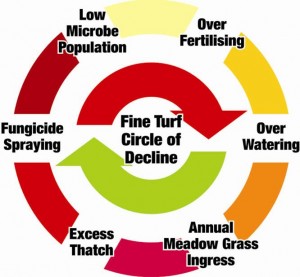
Annual meadow grass on greens is famous for two things; the prolific production of seed-heads and that lovely vomit like colour it goes right afterwards, usually when there’s a big tournament about to start! When it goes yellow like this in summer it is actually dying, it has seeded and its work here is done. The only way to try to recover this situation on the now inert soil is to add nitrogen, as the plants have lost all ability to support themselves. This needs to be watered in of course, reducing air space in the soil. Continually more fertiliser and water is required to keep it alive in summer as it has no mycorrhizal pals to help with that. Thatch builds up, Autumn comes and brings with it the rains. Too much moisture is held up at the surface by thatch, disease takes hold as the fungal pathogens like fusarium, have no competing fungi or predatory microbes to keep them in check, we spray fungicide and kill any beneficial fungi that were trying to come back along with the pathogens…and on it goes, back for another spin on the Circle of Decline, which is a long term problem on many greens.
Answers!
OK, I’ve banged on about microbes again and it is fascinating don’t you agree? BUT…”what is the solution to this?”
It’s really rather simple, but requires a bit of an overhaul in terms of both greenkeeping practices and our seemingly inherent need to control everything. We need to relax a bit.
- We need to agree that we are going to work towards providing the correct soil biology for fine grass. If we choose to keep trying to remedy the Poa problem by physical and chemical means this won’t work, the two are incompatible. By setting things in motion for the right, fungi dominated rootzone, we will see a natural transition. First, we will see a transition of the meadow grass itself from Poa annua to Poa annua annua, which is actually a perennial grass adapted from the existing annual stock. It has finer leaves and doesn’t produce seed-heads as prolifically. It’s the nicer cousin of Poa annua that wouldn’t embarrass you so readily at a greenkeeper’s convention.
- Meantime, any remaining fescue (usually not much if any) or bentgrass (sometimes still there in encouraging amounts) will become increasingly dominant and start to spread vegetatively. We can encourage this further with judicious over-seeding when conditions are (much) more favourable later. For now save the seed money.
- We must carry out work to help build a good beneficial fungal population in the soil. Thatch is of course fungal food and degrades to produce plant food, but in many cases of Circle of Decline greens there is just too much of it to be useful, so we need to reduce it somewhat. I’ve discussed that elsewhere and it is largely an autumn job. For now, we can start the ball rolling by applying fungal inoculants in the form of cheap and cheerful compost tea.
- Continued aeration is essential to keep oxygen levels high for the growing population of aerobic microbes in the soil, which of course releases further nutrients from the degradation of thatch. The Performance Bowling Greens Program details all of this month by month for the different stages of transition. There is even an answer to greens where you daren’t take a machine in for fear of ripping the shallow rooted turf off.
- We can make sure our root systems are colonised with mycorrhizae, these fungi favour the perennial Poa species and our fine Fescue and Agrostis grasses, they will ensure more rapid development and success if you are overseeding and will boost the vegetative reproduction and spread of the existing perennials in the sward.
- When overseeding time comes we can use seed pre-coated with Mycorrhizae, but it isn’t over-seeding time yet!
- We can switch to organic fertilisers pre inoculated with Mycorrhizae. This is a BIGGY, let’s get off the Salts asap.
- We can use science to get the soil chemistry right, balancing the ratio of calcium, potassium and magnesium for optimum nutrient uptake and to minimise the need to fall back on inorganic nitrogen. It’s a good idea to start with a chemical soil analysis for this.
- We need to fertilise only as required, employing the sarrel roller more frequently to boost rootzone oxygen (and of course microbes) first; only if this does not kick start growth, feed lightly with humic acids or seaweed to feed fungi. Every green is different here, so Nitrogen and Potassium requirements will vary. However, through the increase in humus we will be increasing the cation exchange capacity of the soil which will help us to reduce fertiliser applications inputs and speed up the conversion process especially on greens that are way too sandy, or indeed on USGA specification greens.
- Phosphate applications are usually not needed. It’s need in very small amounts anyway, 10 parts per million of available phosphate is enough for the mycorrhizae to work on to make available to the plant for healthy growth. There is often an abundance of locked (due to acidic soil) up unavailable Phosphorus in the soil anyway.
- Overseeding can commence only after thatch is down to the optimum level, but when done properly it can speed up the conversion rate, especially if you have a thin sward or are starting from a 100% Poa situation with almost no fine grasses to speak of. Otherwise, and this is in most cases, there is not usually a need to commit to overseeding at all.
- It’s easy to see Poa as the enemy in this, but even enemies should be treated with respect. Think of it as a prisoner of war for now and look after it as you would hope to be looked after if you were a POW! That means, you shouldn’t let it starve in the winter, as during the transition period it is at least grass, the alternative might be weeds and certainly moss. Poa is a late starter in Spring, with the perennials usually stealing a march on it due to their better developed microbial support systems. This means that in early spring Poa has to feed off its own stored up nutrition. If it has no available nutrient it will start to grow too much later than fine grasses. Judicious fertiliser application in late autumn or during warm periods in the winter will help the Poa to maintain a nutrient store in readiness for the Spring warm up, making sure you have continued grass cover and are more likely to be able to produce a reasonable surface for opening day. Remember this is still transition time. This will also reduce the need for heavy inorganic fertiliser applications in spring, further reducing the salt going into the soil.
In addition to all of that, you can get really scientific and analyse your soil for microbial activity, which can be done at reasonable cost if you have the inclination. This will give you a measure of the total active fungi and bacteria, protozoa and nematodes in your rootzone.
Here’s the Money Shot
As a key part of the Performance Greens Program this process can go on year round and although it sounds too hands off to be be real, I guarantee you will see a steady transition towards a green dominated by fine, perennial grasses in a surprisingly short time frame. You will encounter fewer disease outbreaks, saving money on fungicides, you will use less irrigation, sand and fertiliser and you will see a decrease in localised dry patch occurrences.
You will be improving your green and spending less on its maintenance.
Questions Please
As always, if you have any questions or comments you are welcome to drop them in the comments section below or send them straight to me via the contact form. I look forward to helping you transform your green and/or hearing your success stories.


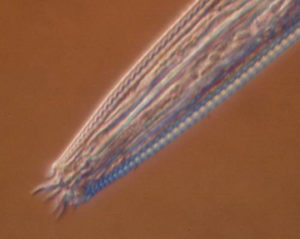

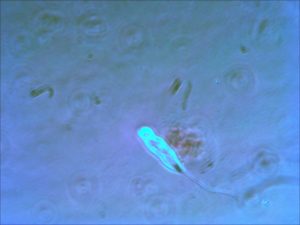
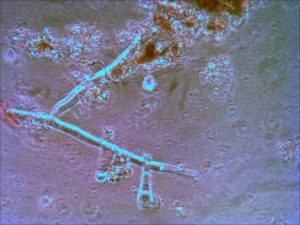

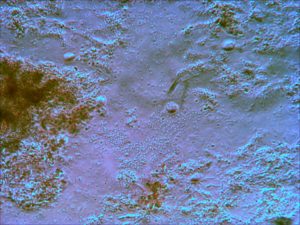

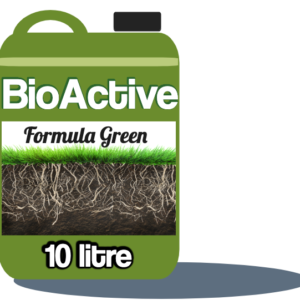

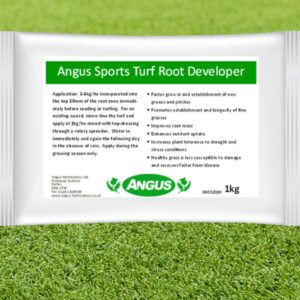

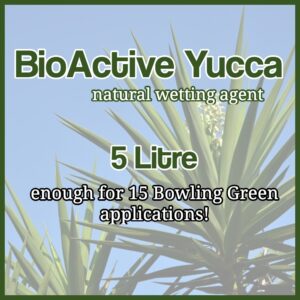


Recommendations for an independant soil analysis. I can find 3 or 4 providers who are linked to fertiliser and chemical suppliers. Their prime objective is to sell me expensive chemicals.
Hi Alan
I’ve sent you an email about this.
Thanks
John
I am trying to persuade our club committee (cricket and bowling club in Yorkshire) to convert to a biological approach in looking after the bowling green and I would like to employ the Symbio Cos. products and methods. The committee are proving hard to convince albeit that none of them have ever had any involvement with green maintenance. How can I convince them that this is the route to follow ?
Hi Bob
Thank you for your message.
To a lay person, there will be very few outward signs that your program has changed if you employ a natural greenkeeping approach such as my Performance Bowling Greens program.
However, if you feel you need to convince others of the benefits of change first you could point them to the article above and/or to Performance Bowling Greens and to a greater or lesser extent to just about any article on this site, plus many others.
Fungal dominated rootzones are just as applicable to cricket as they are to bowls and golf. The object is to encourage perennial grass domination of the sward
Please also see the reviews dotted around Bowls Central for 3rd party confirmation of results and success stories.
If I can be of any direct help, please let me know either here or by email
Thank you for using Bowls Central and I look forward to helping you with your green.
John
John,
Very informative read. Thanks for posting it. I’m interested in your eBook, but it doesn’t appear available in the US. Is there a trick to getting it here that I’m missing. Seems like a must have for me trying to grow/maintain bentgrass greens in the Pacific NW of the US. We recently regrassed all 21 putting surfaces, and I wish to protect that investment rather than watch it convert back to Poa annua. Your text seems like the perfect “primer” for success in this endeavor. Thanks for any information you can provide that helps me add a copy of your book to my library. Even a print version would be great.
Hi Kevin
Thank you for your message. I’m going to send you an email to deal with your main question about the ebook.
Meantime, I think in your location you can work well with a natural greenkeeping program (focussing on soil health and microbial diversity) and get good results in retaining bentgrass purity on your greens.
More soon by email and thanks for reading my articles.
Regards
John
Hi John,
I tip my cap to you. I have been both practicing and preaching biological greenkeeping for the last six years. I have grown-in two golf courses with excellent results and I can back up your advice 100%. Those who decide to drop the chemical practices and follow your advice will prosper. What strikes me most is that you have a gift for explaining the process. Thanks for taking the time to share your words. Keep up the good work.
Best regards,
Sam
Thank you Sam
Great to hear from you. Keep up the good work!
John
Great read John, I never tire of reading about the soil food web and I think as a greenkeeper, and like most others believe it’s right but still rely on inorganic fertilisers and sometimes fungicides, simply because your jobs on the line. I’ve used compost teas for about 4 years and have definitely seen some benfit but it ain’t the silver bullet, doesn’t really reduce my requisite budget and I still have a fungicide in stock just in case.
Cheers, Alan.
Hi John
Great read. Is there a way that I could get the article by email to share with someone?
Hi Niall
Thanks for your message.
Easiest way is just to copy the URL and paste it into your email:
https://bowls-central.co.uk/green-keeping/natural-greenkeeping/poa-annua-to-bentfescue
If you need any help, let me know
Regards
John
Great article! Curious to know and having grown-in a golf course using synthetic fertilizers and chemicals to protect the plant myself, Is it possible to grow-in a green using these techniques?
Hi Ryan
Yes. Starting with a completely lifeless rootzone will always put pressure on young perennial seedlings, as they are not natural pioneers. The tendency will always be for Poa to establish in any weak areas. Most dangerous time for that is right after the seed reserves are exhausted and this is when we typically see the rapid fall off in seedling survival after over-seeding established greens too.
Using Mycorrhizae and introducing microbes via compost tea and feeding the soil and microbes with Bio-Stimulants will improve results.
Knowledge (across the team) about how bare soil inhabitation and grassland progression works (as described in this article) in nature will be very helpful.
Thanks for your interest
John
Hi John , great to see the benefits of an organic dominated approach being pushed forward . Are the microbes in a liquid form or freeze dried then rehydrated ?
Hi Neil
The microbes are already in a pre-inoculated compost and multiply in the presence of oxygen and a food source during the compost tea brewing process.
More on the compost here
More on Compost Tea generally here.
If yo need any further information, please let me know.
Regards
John
Hi John our bowling green is seeding all over nightmare to bowl on as a complete novice what and how should I be putting on to help get bent and rescues grasses is this watered on I would appreciate as much info as possible thanks tony
Hi Tony
I’m afraid it’s not as simple as spraying something on. It’s more to do with changing your greenkeeping approach to encourage a soil that naturally favours bent/fescue i.e. a soil that is microbially active and fungal dominant.
This means dropping out high salt mineral fertilisers and reducing fungicide use over time as well as starting to use low salt fertilisers, bio-stimulants and compost tea.
If you have a recent soil analysis, I’d be happy to look over that and give you some pointers. If possible you can also send me some further info based on a green assessment as explained in this article
Send me what you have by email and I’ll draw up a plan for you to follow.
Regards
John
Tennyson,
I learnt this turf management technic of soil health in my early years of training. Went on to use it for 20 years at 2 golf courses as the Superintendent.
The poa reduced to very low % over around 5 years.
Fert reductions.
Chemical reductions.
Greens tempering, reduced.
( scarifiering, coring, top dressing, watering)
All aeration was conducted in relation to compaction tests. An ideal measurement was worked to with a 20% buffer.
In the last 10 years added humic acids to the program to clean soil aeration spaces of wanted soil contaminates. Works very in the program.
Thanks for your article, it is the first time I have seen the process written.
Transition to bent with cultural practices. ✅
Tennyson Blake
Shepparton
Australia.
Can you recommend a domestic approach to making compost tea? Is there a product for making smaller quantities?
Secondly, are wetting agents recommended in your perspective?
Thanks
Hi John I hope you can help love the article but can you simplify it for me please and give me a step by step plan, I have weed killed most of the lawn before I found your article, so I am starting again what is the best grass seed to use to over seed what mix, what is the best way to make the soil more acidic to put off the poa taking over again grateful if you could set me up a bit of a plan for this with names of Fertiliser and feeds and even maybe sulphur that I can get from eBay for a local garden centre thanks very much for any advice you can give me Ric
I am curious about your comments concerning salt in the soil. Links grasses thrive in areas where they are sprayed frequently with salt water, sometimes flooded with salt water. I would have thought a mild saline solution would stress Poa etc. without affecting the desired grasses. Has anyone researched into this idea?
We’re talking about two different things here Rob
1 Salt from sea water
2 The build up of mineral salts from excessive use of synthetic fertilisers and their effects on soil microbiology.
The article is mainly about the latter.
Some articles on various turfgrass species tolerance to soil salinity here.
From experience some golf links really suffer with flooding and constant sea spray, and have to actually flush their greens with irrigation water to wash out sea salt. Especially in winter months. If not they can lose grass coverage and probably the weaker grasses like poa. This is also a big issue in the south west USA where ground water is used for irrigation. Over time, aquifers have been depleted and the ground water has become saline, requiring flushing of greens with potable water to remove excess salt.
Hi John how do I get rid of rye grass it was sown by a contractor some years ago